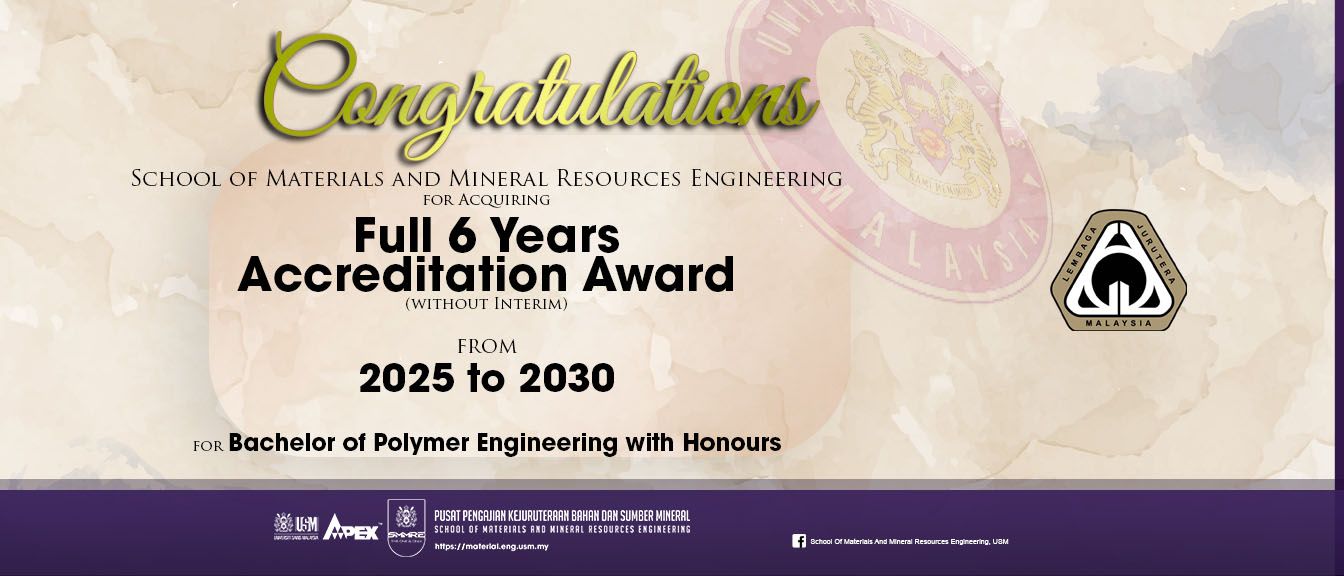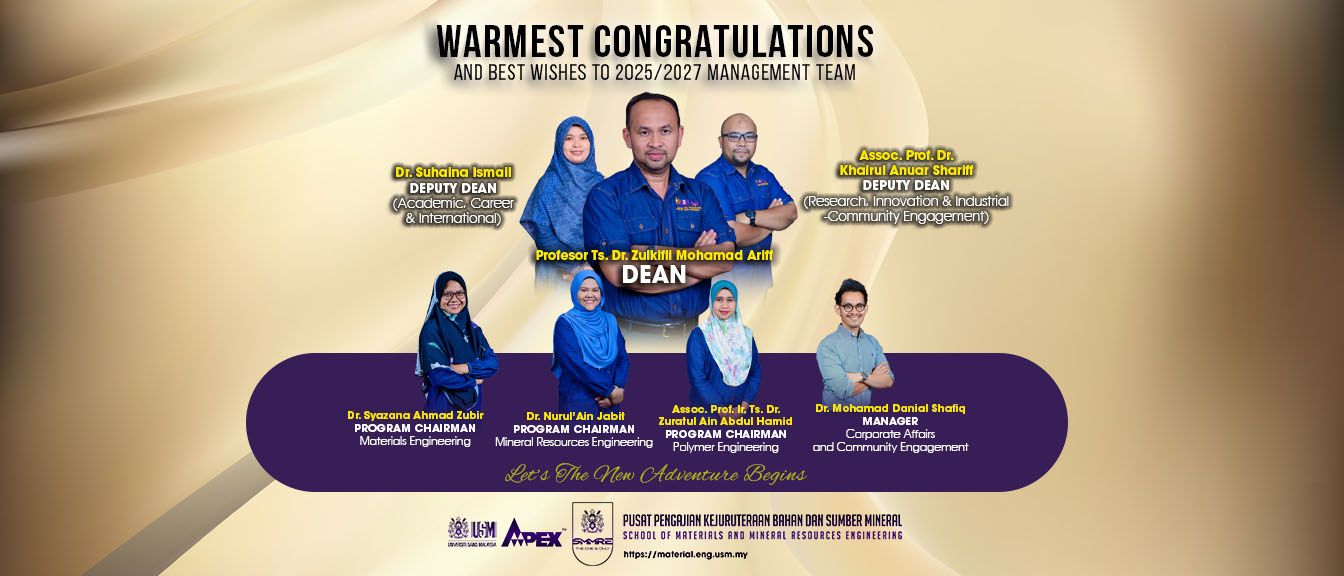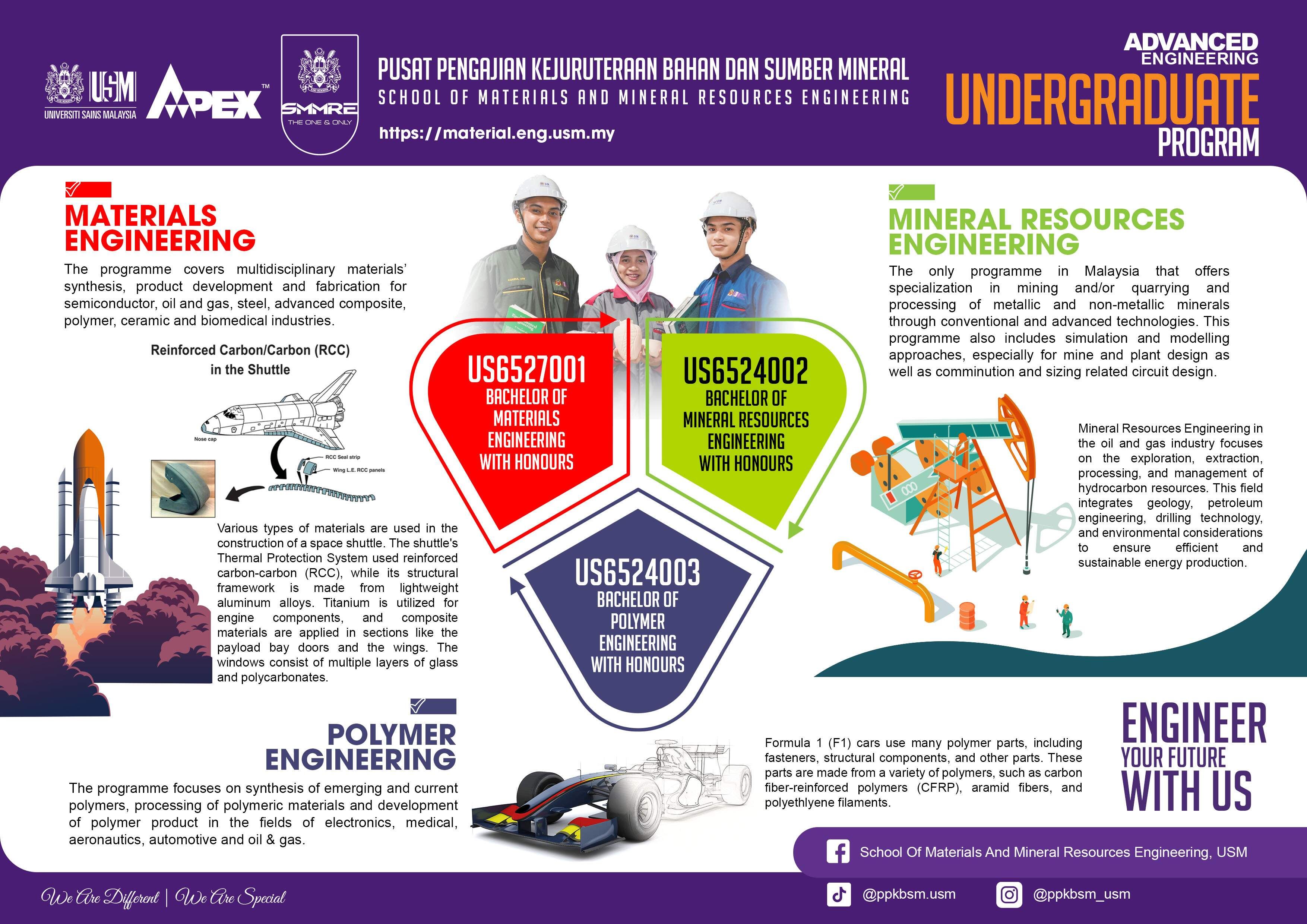SCHOOL OF MATERIALS AND MINERAL RESOURCES ENGINEERING
The One and Only
News & Highlights
Alumni and Industrial Partners Brief Survey
School of Materials and Mineral Resources Engineering USM invites our postgraduate alumni and industrial partners to participate below surveys designed to gather your invaluable feedback to enhance the quality and relevance of our postgraduate progr…

Sesi Penilaian dan Lawatan Pematuhan (CE)
Sukacita dimaklumkan bahawa Sesi Penilaian dan Lawatan Pematuhan (CE) bagi Program Ijazah Tinggi Mod Penyelidikan secara fizikal akan berlangsung di Pusat Pengajian Kejuruteraan Bahan dan Sumber Mineral.

Short Course on Advanced Mineral Characterization
Who Should Attend:
Technical officers, engineers, researchers, and policy-makers seeking advanced skills in mineral characterization.

GOTONG-ROYONG PERDANA PPKBSM VS KAMPUS KEJURUTERAAN





